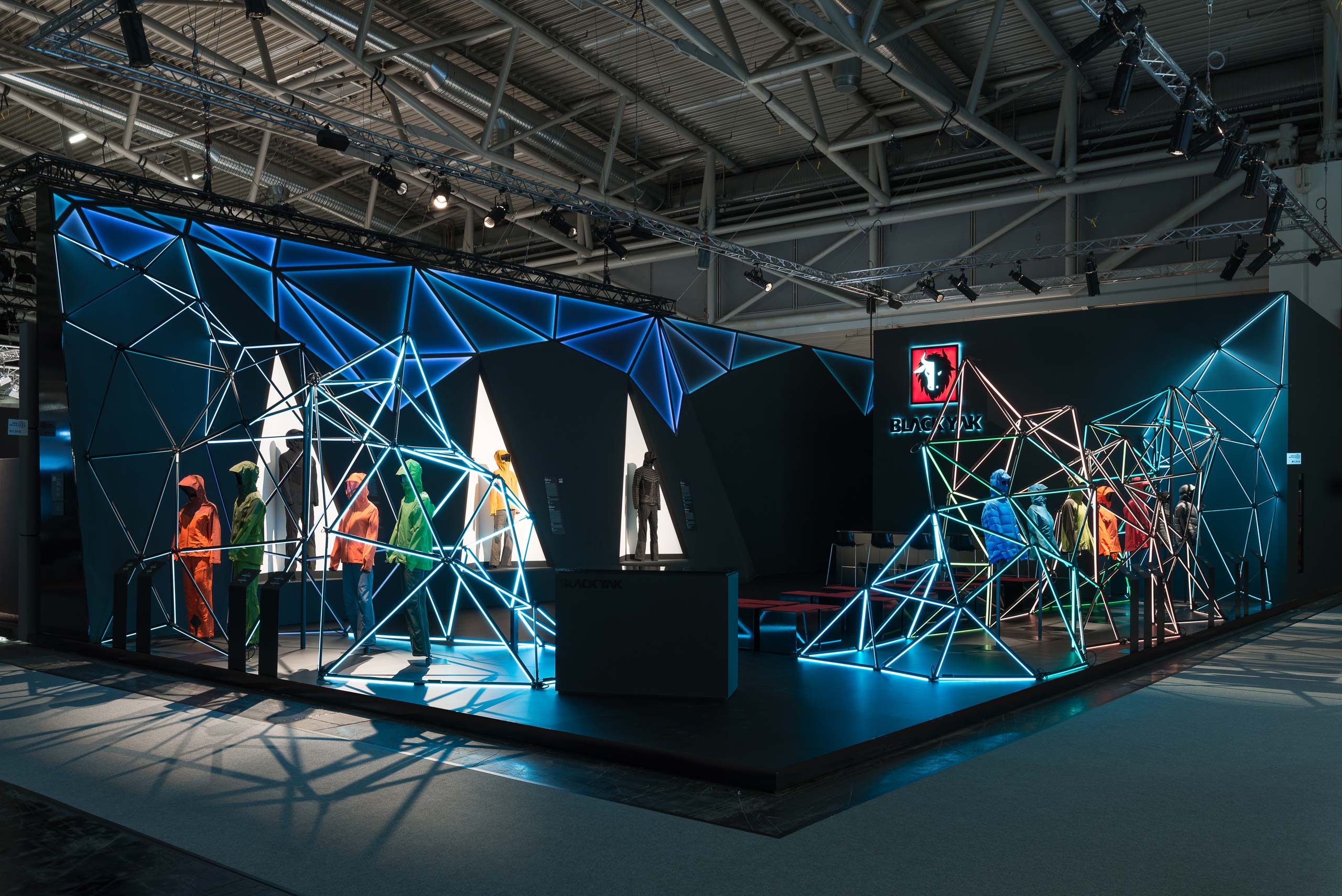For the trade show booth of the South Korean outdoor clothing company Black Yak at ISPO 2019, Julian Dostmann from Atelier Grande designed a mesh-like, polygonal structure based on an abstract mountain landscape. The task for us was to design, optimize, calculate and document the constructions consisting of approx. 300 contiguous light bars for production and assembly. The stand won the “Red Dot Communication Design Award 2018” and was published in the online and print edition of Detail Inside.
The use of an iterative algorithm made it possible to advance the concept design into a viable construction. For this purpose, lighting products were available in five different lengths. In a constraint-based procedure, the number, lengths, angles and positions of all light bars were simulated and optimized for constructability. Since none of the computed theoretical lengths for the interconnected members match the discrete lengths of the available light bars exactly, inevitable tensions in the system occur. The nodes are therefore of particular importance: due to their multi-joint structure, the average discrepancies between computed bar-lengths and available real bar-lengths of up to 10 mm can be compensated for; however, this potential diminishes with the number of adjacent bars per node. In particular, this affects nodes with neighboring bar angles of less than 45 degrees. Due to the design, such close connections to a single node are technically not possible and require a double- or triple node.
In addition to system optimization, the positions and orientations of all elements, as well as their assembly sequence and electrical wiring, had to be documented as easily as possible for on-site assembly. The identification codes and coordinates of all nodes were noted in a table, both in the Cartesian and in a local coordinate system, to enable unambiguous positioning in space.





